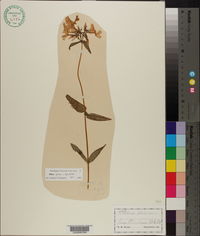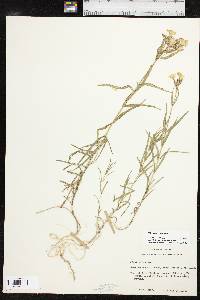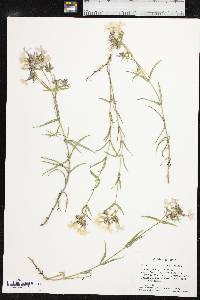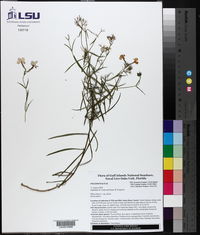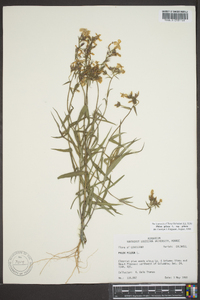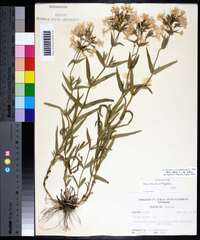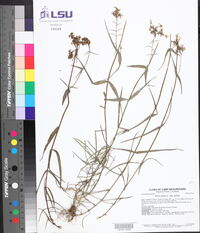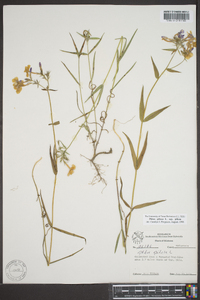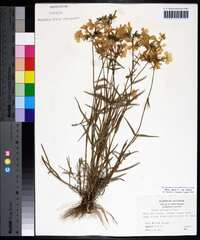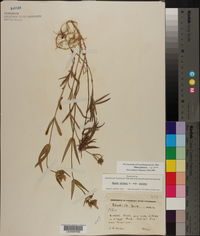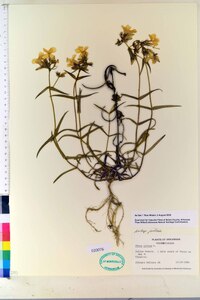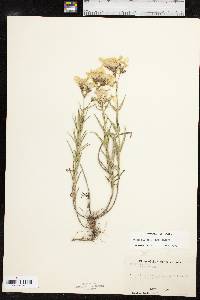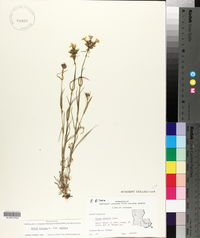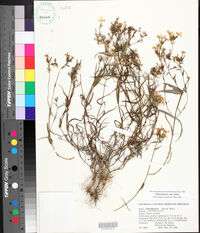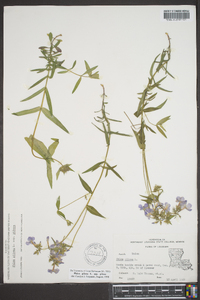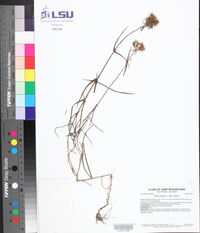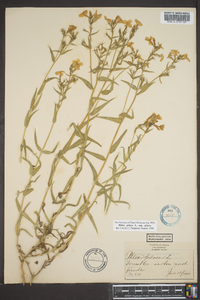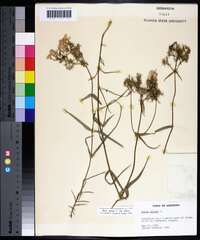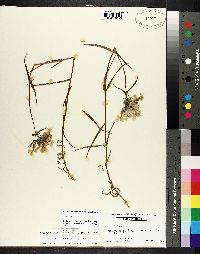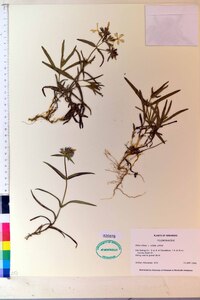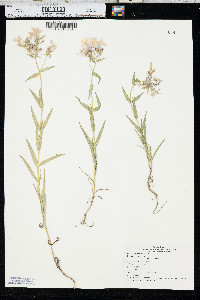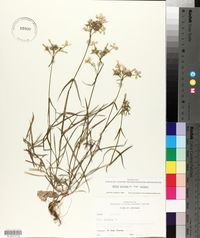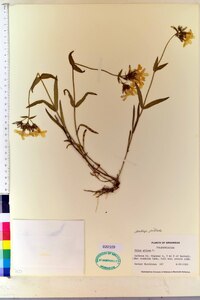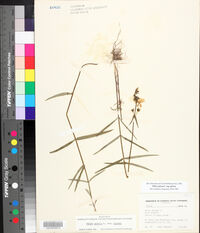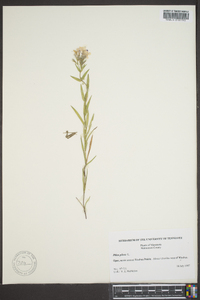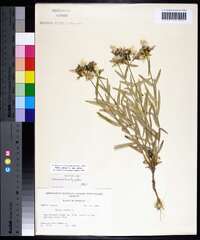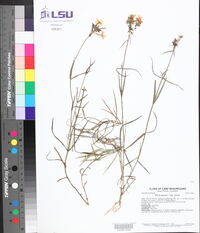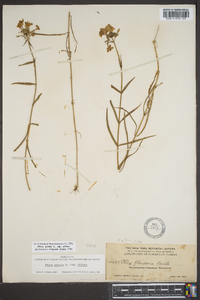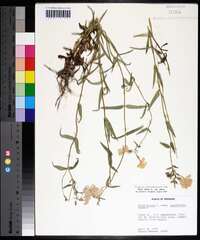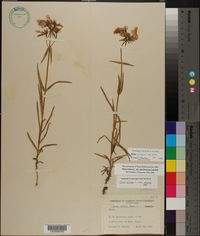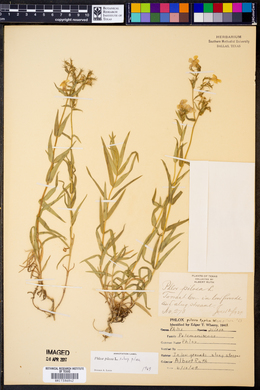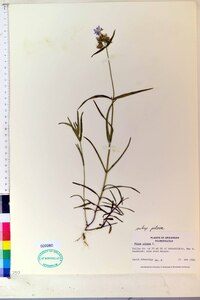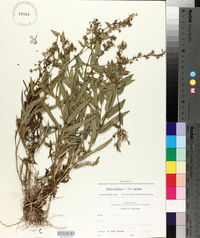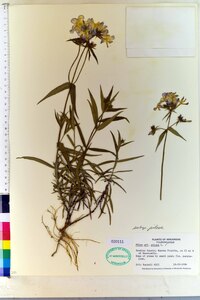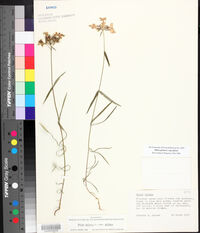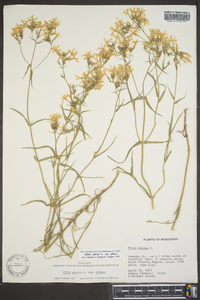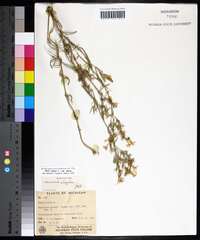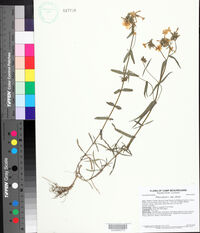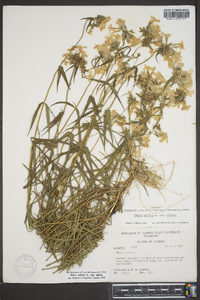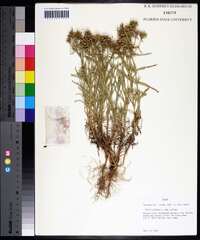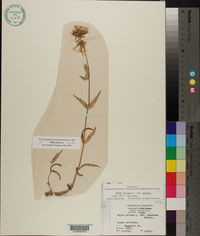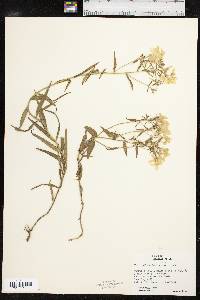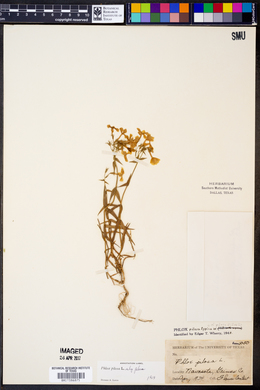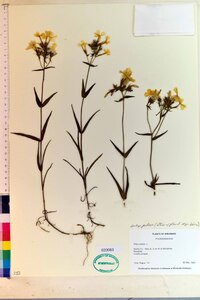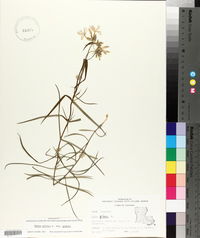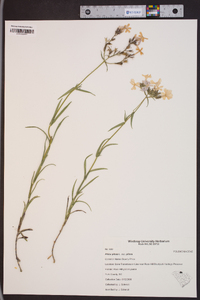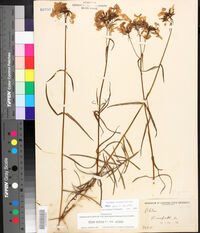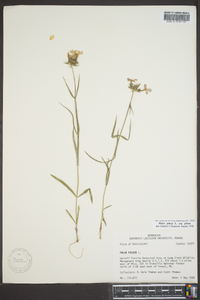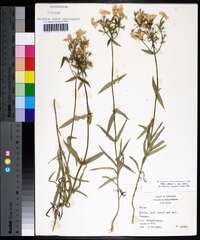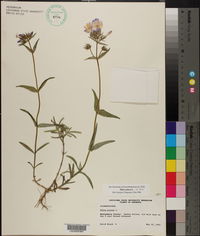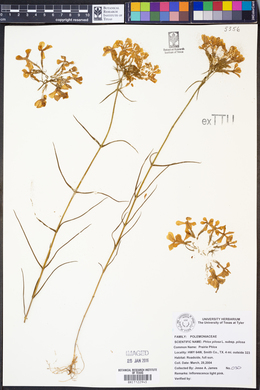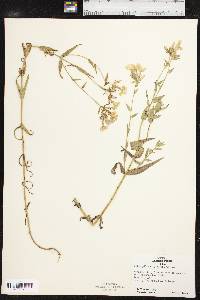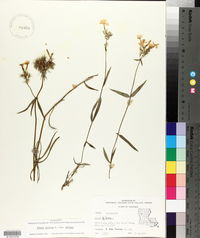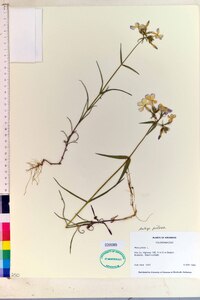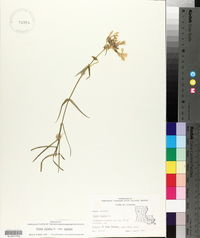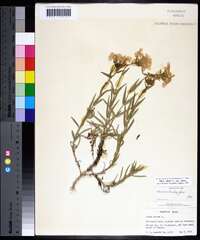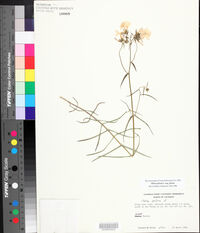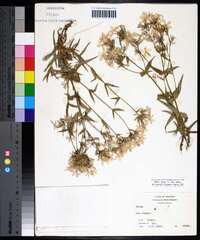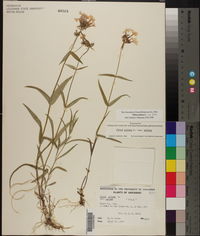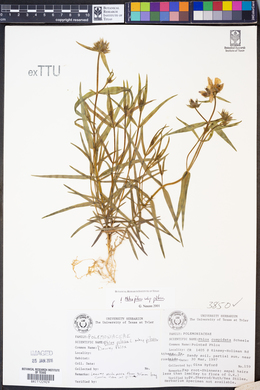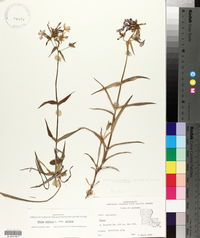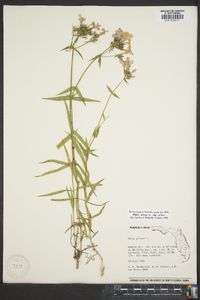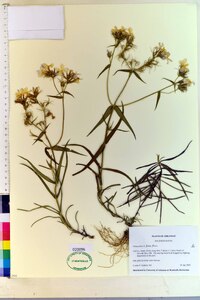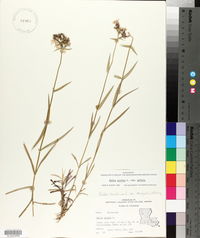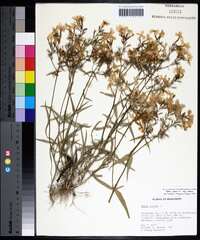Phlox pilosa subsp. pilosa
|
|
|
|
Family: Polemoniaceae
Downy Phlox
[Phlox pilosa f. albiflora Mac Mill.] |
Perennial herb 25 - 60 cm tall Leaves: opposite, stalkless, longer than wide, and abruptly or gradually narrowed to a sharp, stiff point. The lower leaves are linear and almost hairless, while the larger leaves, above the middle of the stem, are lance-shaped, 4 - 9 cm long, 0.3 - 1 cm wide, and more evenly hairy. Inflorescence: terminal, loose and open branched, covered with obvious glandular hairs, and having twenty to fifty or more flowers with bracts scattered throughout. The two lowest branches of the inflorescence are at least 1 cm long. Flowers: short-stalked (stalks 4 - 8 mm long), pink or purple, sometimes white or occasionally lavender, 1.5 - 2 cm wide, radially symmetric, with a slender tube, and abruptly flared lobes. Sepals: five, 0.8 - 1.2 cm long overall, but fused for up to half their length, then separating into awl-shaped lobes with 1 - 2 mm long, stiff, bristle tips. Petals: five, but fused into a 0.8 - 1.5 cm long, hairy tube (sometimes with a few glandular hairs), then separating into 1.1 cm long, 0.7 cm wide, inversely egg-shaped lobes with rounded or abruptly short-pointed tips. Stamens: five, with filaments attached at different heights along the inside of the petal tube, but never extending beyond the petal tube. Pistil: with a single, three-chambered, superior ovary; and three, short (1.5 - 4 mm long, usually shorter than stigmas or ovary), fused styles, which separate above the middle into three, linear stigmas. Fruit: a three-valved, three-chambered, egg-shaped capsule with one (rarely two), relatively large (up to 6 mm long), ellipsoid seed per chamber. Stems: slender, with horizontal, non-rooting, non-leafy shoots, and normally a single, erect, fertile shoot (with leaves and flowers), which is unbranched below the inflorescence, and covered with long, soft, non-glandular hairs. Similar species: Phlox pilosa ssp. pilosa is one of five subspecies of P. pilosa in eastern North America. These five subspecies can be distinguished by the hairs of the inflorescence. There are only two subspecies in the Chicago Region, this one, which always has glandular hairs in the inflorescence, and P. pilosa ssp. fulgida, which never has glandular hairs, but rather multicelled, long, silky hairs in the inflorescence. Flowering: May to August Habitat and ecology: Very characteristic of sandy black oak savannas and prairies. Occurence in the Chicago region: native Notes: This subspecies is known to attract many insects, including long-tongued bees, and especially butterflies. Etymology: Phlox is the Greek word for flame. Pilosa means covered in soft, long hairs. Author: The Field Museum From Flora of Indiana (1940) by Charles C. Deam [Deam's treatment includes three varieties - amplexicaulis, fulgida, and pilosa. Variety pilosa has glandular hairs in the inflorescence.] It is a frequent plant in the lake area and where it is found it often forms complete stands, notably along railroads. In the Tipton Till Plain, it is infrequent to rare, becoming infrequent to frequent on the crests and open slopes of wooded ridges along the Ohio River. It is also sometimes found in wet places in the south. In the northern part of the state it is most commonly found in rather dry, open, sandy woods, along roadsides and railroads, and less frequently in moist prairies, marshes, and bogs. Wherry writes me that "the common Phlox pilosa in Indiana is what I call variety virens, which is the same thing as variety 'typica' in the sense that it is the Linnean plant on which the species was founded." The second form of the species [var. amplexicaulis] is rare in Indiana. We have it under cultivation in neutral soil and it is a very thrifty and a highly ornamental plant. It forms large mats and has a long flowering period. This is a variety with the inflorescence densely clothed with long, coarse hairs and rather broad calyx lobes. So far, it has been found in only two counties. In Spencer County it was found in hard, white clay soil in low, open, white and post oak woods along Little Pigeon Creek. In Perry County it was on an open wooded slope with beech, and it was abundant along this woods in an old fallow field. This variety is rare within its range. Phlox argillacea Clute & Ferriss. The authors of this species say that it is distinguished by its "lighter green leaves, greater height, less compact flower clusters, restricted habitat, and, above all, pale flowers and later and longer season of bloom." Wherry refers this to a form of the variable species, Phlox pilosa, and says "the only way they can be distinguished is by the greater vigor of the former, a difference of horticultural but not of taxonomic significance." [see P. pilosa subsp. fulgida for further notes] …… Indiana Coefficient of Conservatism: C = 6 Wetland Indicator Status: FACU |


